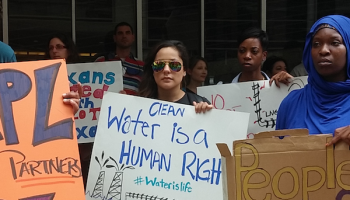By Trilby MacDonald, Ecology Center Writer
Drivers who are thinking about going electric have a lot to consider. The Ecology Center’s own Mackenzie Monroe offers helpful tips for anyone thinking of making the switch.
Mackenzie Munro is the Ecology Center’s Environmental Education Director.
She lives in Williamston in Ingham County, a 100 mile commute round trip to her job in Ann Arbor. Mackenzie wanted to reduce her carbon footprint, but she wasn’t sure if an EV would be practical. A lot went into her decision, from purchase costs and ease of maintenance to the availability of charging stations.
“Ann Arbor has a plethora of charging stations,” Mackenzie says, so driving her EV to work is a cinch. But when she and her husband travel elsewhere, they have to plan carefully. “There are still a lot of dead zones. So places we look where we're going to vacation, we're like, we definitely cannot take our EV because there's no chargers around that specific area,” she explains. Another factor is the weather. “You might get your whole range that they advertise the vehicle as getting if it's 70 degrees and sunny, but when it's rainy or cold, that mileage can drop.”
After researching the wide variety of EVs on the market, Mackenzie decided on a used Hyundai Kona. But Michigan is keen on promoting its own vehicles so she would have to purchase her EV out of state. This added about $750 in shipping costs, but with the $4,500 rebate for a used EV it was still cost effective. She also had to budget $1,500 for the parts and installation of a Level 2 charger in her home that would allow her to fully recharge her EV overnight. As luck would have it, her brother-in-law is an electrician and saved her $1,000 on labor.
“Having that charger is absolutely amazing,” she gushes. “I actually really love my purchase. I love not stopping for gas.” While the environmental benefits are important, the bottom line for most consumers is cost. EVs typically save between $18,000 and $25,000 during the life of their vehicles compared to gas powered vehicles. Mackenzie reports that her car has not needed any repairs, and as long as gas prices are over $3 a gallon she’s saving a significant amount of money.
The thing she believes would spur EV adoption the most is to build more charging stations and repair the existing ones, “because it's the worst when you plan your trip and then you show up and it's out of commission.” She advises the wise traveler to plan ahead: “There's a lot of really great apps out there that tell you chargers that are working.”
Mackenzie Munro is delighted with her EV. But does she recommend them to others? The answer comes down to one thing: Location, location, location. This is a rallying cry for public/private partnerships to build out the EV charging grid. There are currently over 9,000 public EV charging stations in Michigan, but tens of thousands more are needed to make EV adoption practical across the state. The Trump Administration is attempting to claw back much of the $110 million that the National Electric Vehicle Infrastructure (NEVI) Program allocated to Michigan. In response, the 2025 budget includes $30 million to help fill the gaps.
In the late 18th century, viable electric vehicle prototypes went off course and for better or for worse, Henry Ford introduced the world to the gas powered automobile instead. Today, we have the chance to lead again by producing the world’s best EVs. But without the infrastructure to keep them zooming down the road, they won’t gain much traction with Michigan drivers.


